Soviet Lunar Program 1975
Background:
After the N1-launched Zvezda project was cancelled, the new head of NPO Energia, Glushko, still considered the establishment
of a moon base to be a primary goal for his country. While the Americans had achieved the first moon landing, it was known
that all moon flights after Apollo 17 had been cancelled. There existed an opportunity, through establishment of a permanent
moon base, to steal the lead in the space race once again. Furthermore, analysis of the results of the previous unmanned and
manned indicated that the moon was suited for a variety of 'special investigations', and that a permanent lunar expeditionary
complex (LEK) would be required to accomplish this.
To launch the elements of the LEK, Glushko designed a new launch vehicle, the Vulkan. The Vulkan would use the LOX/LH2 engine
technology developed for the US Space Shuttle in the core stage. This would be surrounded by eight strap-on boosters, using
LOX/Kerosene engines, to be developed by NPO Yuzhnoye in the Ukraine. This use of cryogenic propellants represented a complete
turnaround for Glushko, who had advocated use of storable but toxic rocket propellants in a bitter fight with Korolev and Mishin for fifteen years.
The Vulkan was designed to deliver 230 tonnes into a 200 km low earth orbit; 60 tonnes to lunar orbit; and 22 tonnes to the lunar surface.
The LEK consisted of expeditionary and transport lunar spacecraft (Chief Designer K.D.Bushchev) and equipment for the permanent base station
(Chief Designer I.S.Prudnikov).
The expeditionary and transport craft consisted of:
- LEK (Lunar Expeditionary Spacecraft). As in the original LK lunar lander, this would be taken to near zero velocity near the lunar surface by
the Vulkan Block V 'lunar crasher' rocket stage. It would then descend to the lunar surface using a landing stage nearly identical to the American
lunar module descent stage. This landing stage however would primarily provide propulsion of the upper Ascent/earth recovery stage to a trans-earth
trajectory. The Ascent/earth recovery stage consisted of a re-entry capsule in the shape of but larger than the Soyuz descent module, encapsulated
in a larger pressurised volume providing crew quarters and equipment storage.
- LZhM (Laboratory-Residence Module) for three men as the home base for living and working during the expedition. This used a simpler descent stage
with minimal propellant for the soft landing on the moon following separation from its Block V lunar crasher stage.
The equipment of the permanent base station consisted of:
- Lunokhod - a large manned wheeled mobile pressurised laboratory with a working radius of up to 200 km from the base. The Lunokhod would also be
used for loading and unloading operations, and had a grader for burying the nuclear reactors which would power the complex and the laying out of
'streets' and protective berms for the base itself.
- LZM (Laboratory-Factory Module) provided biological and physics laboratories in two lobes. In the other was a factory for production of oxygen
from the lunar soil. This used the same simple descent module as the LZhM.
Nuclear power stations to power all of the modules of the lunar base. Each module of the complex was outfitted with its own autonomous power
station. After landing, this would be removed from the landing stages and buried a distance away from the module before being put into operation.
Transport spacecraft for delivery of expendable and consumable equipment and supplies to the surface. These would use the simple descent module.
The LEK was expected to conduct a wide variety of scientific and engineering studies:
Study of other planets, astrophysics, and astronomy using telescopes covering the entire electromagnetic spectrum from the stable platform of the
lunar surface
Medical and biological studies, including perhaps the production of new bacteriological warfare agents
Production of new materials and gases from the lunar soil (including oxygen for human activities and eventually as rocket oxidiser) and the collection
of helium isotopes from solar wind for nuclear fusion reactors on earth
Preceding construction of the LEK would be reconnaissance by unmanned craft developed by Lavochkin. These would conduct cartographic surveys, study the
relief of the lunar surface, and obtain soil samples to a depth of 10 m from prospective sites. As in the earlier Zvezda concept, the landers, having
surveyed the site, would act as a radio location beacon for the precision landing of follow-on elements of the complex.
Delivery of the components of the LEK would be in three stages:
- Stage 1 - Three Vulkan launches would deliver the LZhM, Lunokhod (with scientific apparatus and consumable for 1.5 years), and an LEK with a crew of
three.
- Stage 2 - Two Vulkan launches to land another LZhM, an open-cabin Lunokhod, and an LEK with a crew of three men for an occupation of six months.
- Stage 3 - One Vulkan launch of the LZM and further scientific apparatus (three months after the start of stage 2). This would give the base the
capability to produce its own oxygen.
Thereafter it would be necessary to resupply the base once a year with consumable supplies. Additional Vulkan launches would be made to rotate crews
to the permanent base as necessary.
The LEK study and initial Vulkan design were completed by the end of 1975. However the Academy of Sciences Expert Commission decided that the LEK
Project should be deferred into the next century. Soon thereafter all of NPO Energia's efforts were directed to support development of the reusable
launch vehicle Energia/Buran.
A modified version of the LEK was proposed in the 1980's using the Energia launch vehicle. Because of the much lower payload capability of the Energia
(88 tonnes to low earth orbit versus the 230 tonnes of the Vulkan) this would use a new LOK lunar orbital spacecraft (unrelated to the earlier
Soyuz-based LOK) and an LK lander based on the Vulkan LEK lander. The LOK and LK lander would be inserted into lunar orbit by separate Energia
launches. As in the earlier projects, prior to the Energia launches an unmanned Lunokhod would scout the region, allowing selection of a suitable
landing site, and serve as a landing beacon for the precision LK landing. After rendezvous and docking in lunar orbit, three of the five crew aboard
the LOK would transfer to the LK and descend to the lunar surface. After 5 to 10 days on the surface, the ascent stage of the LK would return to lunar
orbit, and the crew would transfer back to the LOK. The LOK would remain in lunar orbit for a full lunar day (29 days) until returning to earth. This
proposal did not attract support and further development of the concept was not continued. Thus ended lunar base studies in Russia.
Pictures:
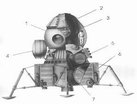
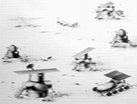
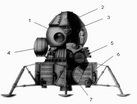
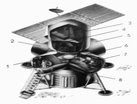
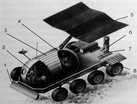
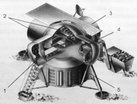
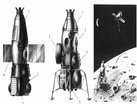
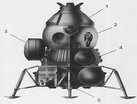
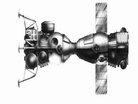
Project
status: In development.
I'm working on LEK and LZhM models.
Very little information can be found about this project. But with kind help of
mr.Alexander Zheleznyakov, one of Russia's leading space experts and a
member of the Russian Academy of Space Exploration, it was possible to
keep the project close to real plans.
My current LEK model appear to be not historically correct, and must be generally redesigned,
according to information, provided by mr.Zheleznyakov.
Pictures of the old LEK model:
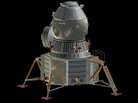
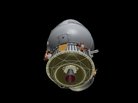
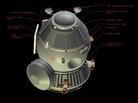
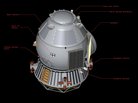
In parralel, work continues on LZhM module.
The model was already redesigned following mr.Zheleznyakov's suggestions.
Due to complexity of the model and lack of the real prototype photos it is very
difficult to make the models to look realistic. But in this task I receive a
most needed help from mr.Ricardo Nunes.
You can see some ingame screenshots of his brilliant work!
Pictures of the old LZhM model:
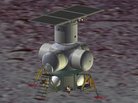
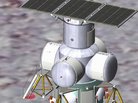
Pictures of the LZhM model, modified by Ricardo Nunes:

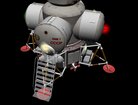

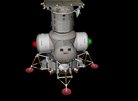
Release date: N.A.
Future
development: N.A.
Screenshots: LINK TO SCREENSHOT GALLERY